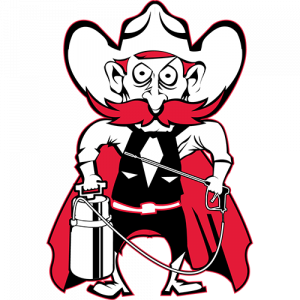The main difference between the two lies in the name, Drywood termites have adapted to live only from the water in the wood they eat. They also live in the wood they infest and are usually found in out-of-the-way places, such as walls, attics, or furniture. Subterranean termites, as their name suggests, live underground. They live in the soil beneath a building and send worker termites into structures to find food and water. Because subterranean termites need moisture and warmth to survive, they build mud tunnels to get to and from the food source and their home colony. But many other things make these pests different.
Drywood termites will eat anything that is wood. They hollow out the wood from walls, door frames, floors, attics, and furniture. They are hard to spot because you can’t see their activity from the outside. Drywood termites may not be detectable until you tap on a door frame and it sounds hollow or your wooden floors appear to swoop or bend.
Other signs of drywood termites that distinguish them are piles of sawdust-looking pellets on window sills or ledges. These pellets indicate drywood termites because they live inside the wood they infest. Drywood termites’ excrement is tiny and dry because they have adapted to severely dry conditions. They need every ounce of moisture from the wood and their digestive tracts squeeze it out completely. Drywood termites are not aggressive and invasive as subterranean termites. It takes them a while to work through structures but Asset Pest Management still recommends handling a Drywood termite problem as quickly as possible.
On the other hand, Subterranean termites can only need a few months to completely decimate a building. Unfortunately, in addition to native termites, there are two invasive subterranean termites in North America to watch out for. These aggressive termites are the Formosan and Asian subterranean termites. Unlike drywood termites, they attack anything and everything that contains cellulose, including live trees, utility poles, and structural wood. Their colonies can contain multiple queens and have a few million members. They eat, repopulate, and work at unprecedented rates. These pests cause extremely expensive damage. Mud tubes running up the walls of your home or up trees on your property are a sign of these pests.
Whether you think your home has been infested by drywood termites or subterranean termites, contact a professional pest control expert like Asset Pest Management. Although some termites are arguably worse than others, ideally, you don’t want any termites in or near your home. For practical and affordable solutions call Asset Pest Management today!


